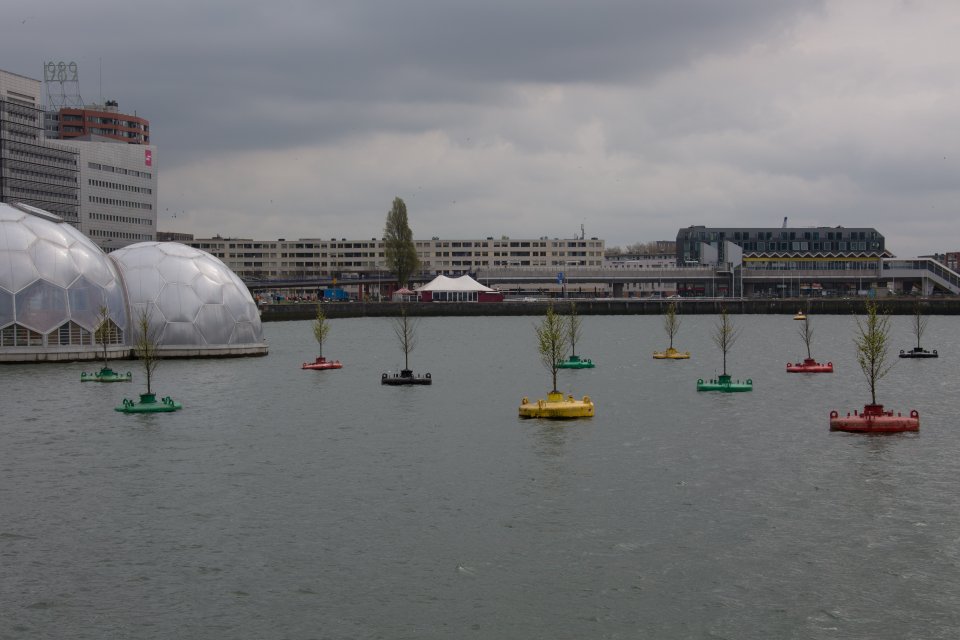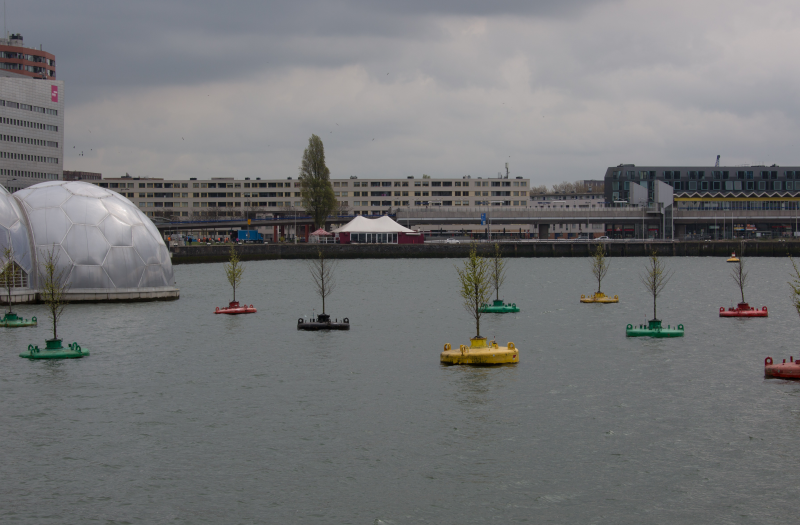Rotterdam - NbS for building a waterproof city

Rotterdam aims to be 100 % climate-proof by 2025. This is the goal expressed in the city’s climate change adaptation programme. This means that by 2025 measures will already have been taken to ensure that each specific area is minimally disrupted by climate change both then and throughout the following decades. Furthermore, all urban planning in Rotterdam will take into account long-term foreseeable climate change while allowing for contingencies.
The ‘waterproof city’ is robust and resilient with a mix of paving and vegetation. The focus is on adaptive measures whereby rainwater is captured and drainage is delayed.
The Dutch government is also preparing for the consequences of the rising sea level, land subsidence and rising temperatures with a combination of infrastructure works (e.g. dikes) and building with nature (restoring ecosystems in flood areas — the tidal park programme). These actions are included in the annual Delta Programme.
Water storage capacity
The changing climate will lead to more frequent extreme rainfall and heavier downpours. This will increase the risk of disruption and damage caused by flooding, particularly in areas that already have a water storage capacity deficit and densely...
- Working together: partners in climate change adaptation should include municipal services, other government departments such as the water boards and Rijkswaterstaat, the citizens of Rotterdam and private organisations such as housing corporations, project developers, utilities and the Port of Rotterdam.
- The implementation approach is not a blueprint listing measures to be implemented in each area. However, it does give an indication of the priorities.
- Implementation is in tune with the ‘rhythm of the city’: renovation or replacement of buildings and infrastructure occurs on average every thirty to fifty years. This timeframe is fine to adapt to climate change.
- The implementation is area-specific: specific measures have to be developed for specific areas in the city.
- Rotterdam has more than 130 000 m2 green roofs.
The Ecorys study shows that making Rotterdam climate-proof will require investment of EUR 4 to 5 billion (2010). Benefits, such as economic development, better spatial planning, nature, safety and lower insurance costs are being studied at present. The study results are expected to be published...
Paul Ramjiawansingh, senior projectleider, Havensteder, Rotterdam, The Netherlands
Nick van Barneveld, senior beleidsadviseur water, City of Rotterdam, The Netherlands
Nienke Maas, senior adviseur Gebiedsontwikkeling, TNO, Den Haag, The Netherlands
